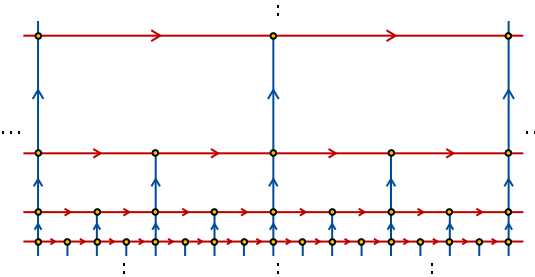A famous theorem of Wolf shows that the growth of a solvable group is either polynomial or exponential. So no intermediate growth among solvable groups. And a famous theorem of Gromov shows that having polynomial growth implies being virtually nilpotent. Consequently, any solvable group that is not virtually nilpotent provides an example of a group with exponential growth but no non-abelian free subgroups.
Of course, using big theorems is not necessary to find explicit examples, but it gives some general perspectives, and it justifies that many examples exist. One simple example is the Baumslag-Solitar group $BS(1,2)$. It has a Cayley graph that is sufficiently simple to be drawn.


The pictures are taken from Wikipedia, where there is also a nice animation.


